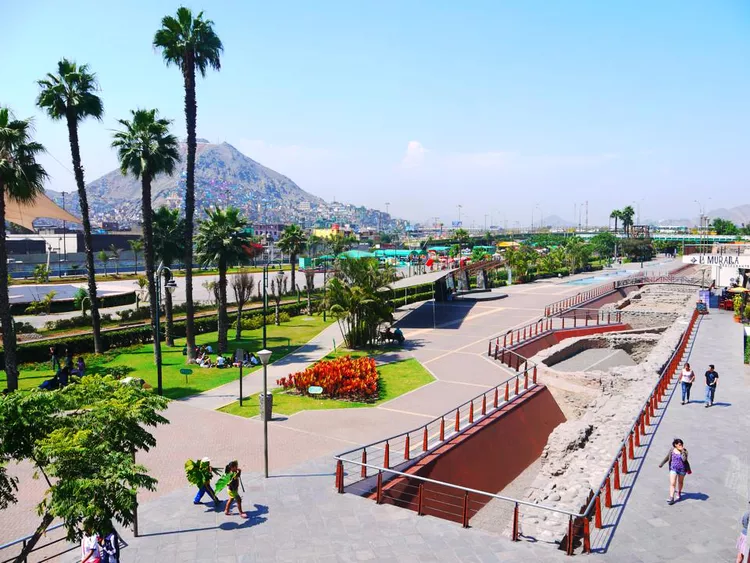Summary of Peru
Fast Facts About Peru
- Official Name: Republic of Peru (República del Perú)
- Location: Western South America (Pacific Coast)
- Flag: Vertical triband red-white-red
- Time Zone: Five hours behind Greenwich Mean Time
- Population: 28,220,764 (according to the last census in 2007)
- Capital: Lima
- Major Cities: Arequipa, Trujillo, Chiclayo, Piura, Iquitos, Cusco
- Total Area: 496,224 square miles (1,285,216 sq km)
- Bordering Countries: Ecuador, Colombia, Brazil, Bolivia, Chile
- Total Land Boundary: 4,636 miles (7,461 km)
- Coastline: 1,500 miles (2,414 km)
- Type of Government: Constitutional Republic
- Current President of Peru: Ollanta Humala
Geography and Climate of Peru
- Geographic Regions: There are three distinct geographic regions in Peru: the coastal plains (costa) to the west, the rugged highland region (sierra) through the center, and the lowland jungles (selva) to the east.
- Climate: Peru’s varied geography leads to a diverse climate, with western coastal plains consisting of dry deserts, Andean highlands ranging from temperate to frigid, and tropical, humid jungles in the east, featuring distinct rainy seasons.
- Highest Point: Nevado Huascaran (22,205 feet) in the Cordillera Blanca range of the Andes.
- Major Mountain Ranges: Andes
- Major Rivers: Amazon, Ucayali, Madre de Dios, Marañón
- Natural Hazards: Peru is subject to earthquakes, flooding, landslides, and tsunamis, while mild volcanic activity occurs sporadically.
- Natural Resources: Peru’s resources include copper, silver, gold, petroleum, timber, fish, iron ore, coal, phosphate, potash, hydropower, and natural gas.
Peruvian Culture and Society
- Ethnic Groups: Amerindian 45%; mestizo 37%; white 15%; Black, Japanese, Chinese, and other 3%.
- Languages: Spanish (84.1%) and Quechua (13%) are predominant, with various native languages including Aymara and Ashaninka.
- Religion: Predominantly Roman Catholic (81.3%), with significant Evangelical presence (12.5%).
- Life Expectancy: 72.47 years at birth, with females outliving males by approximately four years.
- Median Age: 26.2 years, indicating a youthful population compared to other countries.
- Population Living in Urban Areas: 77%
- Gross National Income (per capita): US$4,700
- Population Below Poverty Line: 31.3% in 2010, down from 44.5% in 2006.
- Number of UNESCO World Heritage Sites: 12
Facts About Peru’s Economy
- Currency: Peruvian Nuevo Sol
- Economic Growth: Peru experienced rapid economic growth, particularly noted in 2011. However, poverty remains prevalent, especially in rural locales.
- Major Exports: Key exports include minerals, natural gas, petroleum products, agricultural goods, fish products, and textiles.
- Main Export Partners: United States, China, Japan, Canada
- Cocaine Production: Along with Colombia and Bolivia, Peru is among the largest producers of cocaine globally, surpassing Colombia in production potential as of October 2011.
Transport in Peru
- Air: More than 230 airports exist in Peru, with 58 having paved runways. Domestic airlines primarily operate from Lima’s Jorge Chávez International Airport.
- Land: Peru boasts approximately 63,931 miles (102,887 km) of roads. Common public transportation includes buses, minibuses, and taxis, although the train network is limited.
- River: In the Amazon region, rivers serve as vital transport routes, with significant navigable tributaries in the Amazon system.
References:
CIA World Factbook: Peru
The World Bank: Peru
UN Data: Peru





